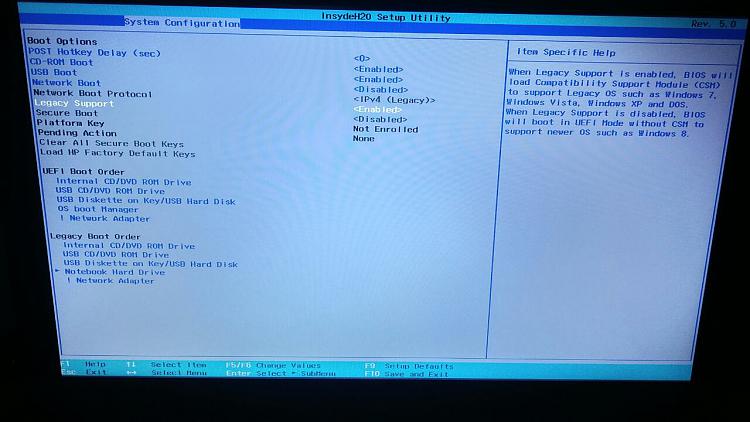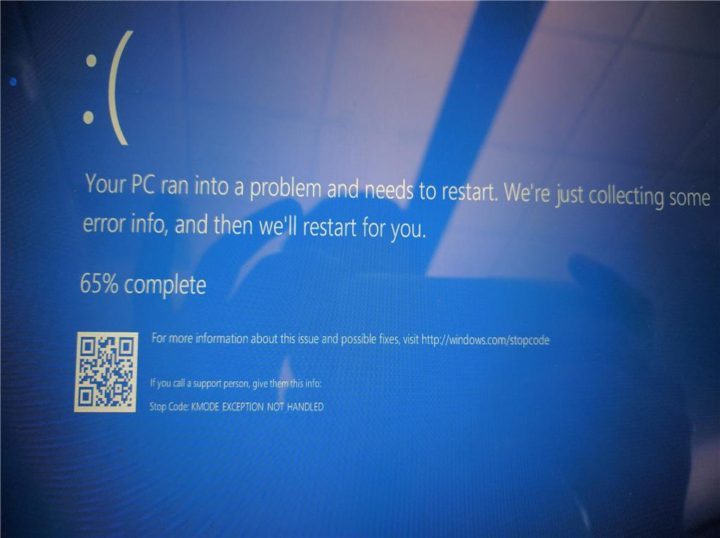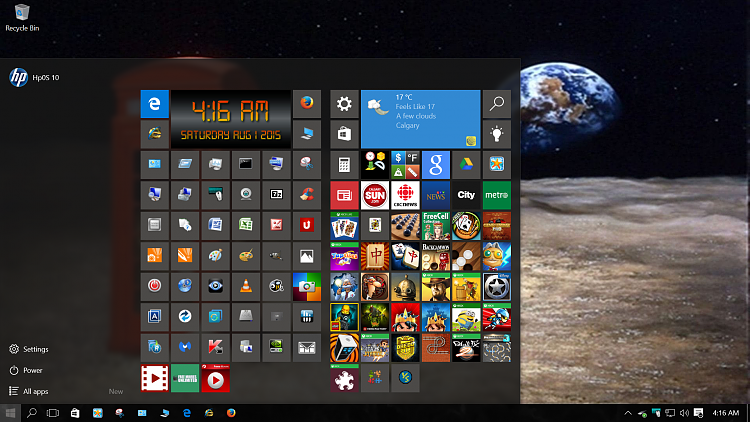If your existing Windows 10 PC is running Windows 10 20H1 or later and meets the minimum hardware specificationsit will be able to upgrade to Windows 11. The upgrade rollout plan is still being finalized, but for most devices already in use today, we expect it to be ready sometime in early 2022. Not all Windows 10 PCs that are eligible to upgrade will be offered to upgrade at the same time. To see if your PC is eligible to upgrade, refer to our knowledge base for a list of tested systems. Once the upgrade rollout has started, you can check if it is ready for your device by going to Settings/Windows Updates. Similar to how end users are notified when updates are available in Windows 10, end users will see an indication in the notification areas of the taskbar in the bottom right, that the upgrade is available.
More information on how that is presented will be available at a later date. Additional desktop notification options may be also be added at a later date. Original equipment manufacturers can still ship computers without a TPM 2.0 coprocessor upon Microsoft's approval. Some third-party software may refuse to run on unsupported configurations of Windows 11. Warren noted that he rarely used the Widgets panel or Microsoft Teams, citing that he preferred the weather display that later versions of Windows 10 offered, and didn't use Teams to communicate with his friends and family.
He also acknowledged the expansion of Microsoft Store to include more "traditional" desktop applications. Overall, he concluded that "I wouldn't rush out to upgrade to Windows 11, but I also wouldn't avoid it. After all, Windows 11 still feels familiar and underneath all the UI changes, it's the same Windows we've had for decades." Citing security considerations, the system requirements for Windows 11 were increased over Windows 10. While the OS can be installed on unsupported processors, Microsoft does not guarantee the availability of updates.
Windows 11 also drops support for 32-bit x86 CPUs and devices which use BIOS firmware. Cunningham concluded that "as I've dug into and learned its ins and outs for this review, I've warmed to it more", but argued that the OS was facing similar "public perception" issues to Windows Vista and Windows 8. At least 16GB of RAM The basic system requirements of Windows 11 differ significantly from Windows 10. Windows 11 only supports 64-bit systems such as those using an x86-64 or ARM64 processor; IA-32 processors are no longer supported. Thus, Windows 11 is the first ever consumer version of Windows not to support 32-bit processors and 16-bit software .
The minimum RAM and storage requirements were also increased; Windows 11 now requires at least 4GB of RAM and 64GB of storage. The compatibility list includes the Intel Core i7-7820HQ, a seventh-generation processor used by the Surface Studio 2, although only on devices that shipped with DCH-based drivers. As part of the minimum system requirements, Windows 11 only runs on devices with a Trusted Platform Module 2.0 security coprocessor. According to Microsoft, the TPM 2.0 coprocessor is a "critical building block" for protection against firmware and hardware attacks. In addition, Microsoft now requires devices with Windows 11 to include virtualization-based security , hypervisor-protected code integrity , and Secure Boot built-in and enabled by default.
The operating system also features hardware-enforced stack protection for supported Intel and AMD processors for protection against zero-day exploits. In October 2019, Microsoft announced "Windows 10X", a future edition of Windows 10 designed exclusively for dual-touchscreen devices such as the then-upcoming Surface Neo. Legacy Windows applications would also be required to run in "containers" to ensure performance and power optimization. Microsoft stated that it planned to release Windows 10X devices by the end of 2020.
Internet Explorer has been replaced by the Chromium-based Microsoft Edge as the default web browser, and Microsoft Teams is integrated into the Windows shell. Microsoft also announced plans to allow more flexibility in software that can be distributed via Microsoft Store, and to support Android apps on Windows 11 . Windows 11 SE was announced on November 9, 2021, as an edition exclusively for low-end devices sold in the education market, and a successor to Windows 10 S. It is bundled with applications such as Microsoft Office for Microsoft 365, Minecraft Education Edition, and Flipgrid, while OneDrive is used to save files by default. Windows 11 SE does not include Microsoft Store; third-party software is provisioned or installed by administrators.
A redesigned user interface is present frequently throughout the operating system, building upon Fluent Design System; translucency, shadows, a new color palette, and rounded geometry are prevalent throughout the UI. Windows 11 has been released officially and is slowly rolling out to eligible users across the world. Some ineligible users have also upgraded the hardware to make their older PCs compatible with Windows 11's new system requirements. However, one important dilemma that many users are facing is which edition to upgrade to – Windows 11 Home or Windows 11 Pro? To make things easier for you, we have come up with this in-depth comparison between Windows 11 Home and Pro. In this article, we list the similarities and differences between the two editions in great detail.
So without wasting any time, let's go ahead and find out the winner between Windows 11 Home vs Windows 11 Pro. Note that Windows 11 will only be a 64-bit release and won't come in a 32-bit flavor. That's fair since 32-bit PCs are not sold anymore anyway and 64-bit editions can run 32-bit applications just fine.
Of course, Windows 11 supports System on a Chip which means Windows 10 on ARM devices will get the upgrade as long as they meet other criteria. The above screenshot makes it clear that Surface Pro X running Windows 10 on ARM is eligible for the Windows 11 upgrade. As I've noted in past blogs, being on the latest version of Windows provides you with the best in creativity, protection and productivity. Windows 11's minimum system requirements enable a new era of experiences, reliability and security.
AsPanos Panay shared in June, this is the first version of a new era of Windows. And, for customers who are using a device that is not eligible for Windows 11, Windows 10 is a great place to be. Windows 10 will be serviced through Oct. 14, 2025and we previously announced that the next feature update to Windows 10 is coming very soon, continuing to offer you both support and choice with Windows. Even the newly-released AutoHDR feature is available on both Windows 11 Home and Pro editions. So it's safe to say that neither of the editions will disappoint you in terms of gaming performance.
That said, Windows 11 Pro offers you a larger ceiling for hardware expansion. It supports up to 2 CPU sockets, 128 cores, and up to 2TB of RAM, whereas Windows 11 Home supports 1 CPU socket, 64 cores, and up to 128GB of RAM. Simply put, Windows 11 Home is more than enough for most users, even for hardcore gamers. Usually, the Home edition is more than enough for anyone using a computer at home for web browsing, working with applications, and gaming. However, if you must have the advanced features, it's possible to upgrade from Home to Pro without having to perform a clean installation using a product key or through the Microsoft Store.
After the download, double-click the ISO file and then double-click the setup.exe file. Click Next at the initial install screen to check for and download any updates to Windows 11. At the Ready to Install screen, you will see that Windows 11 will be installed and personal files and apps will be kept by default. You can refer to our knowledge base for a list of tested systems to determine if your device eligible to upgrade to Windows -11. Many PCs that are less than four years old will be able to upgrade to Windows 11. They must be running 20H1 or later version of Windows 10 and meet the minimum hardware requirements to receive the Windows 11 upgrade.
Windows 11, the first major Windows release since 2015, builds upon its predecessor by revamping the user interface to follow Microsoft's new Fluent Design guidelines. The redesign, which focuses on ease of use and flexibility, comes alongside new productivity and social features and updates to security and accessibility, addressing some of the deficiencies of Windows 10. On August 31, 2021, Microsoft announced that Windows 11 was to be released on October 5, 2021. The release would be phased, with newer eligible devices to be offered the upgrade first. Our launch approach to Windows 11 leverages the well-established systems and processes used for the 1.3 billion Windows 10 devices we have shipped and serviced for over five years.
We will use a measured and phased process in offering Windows 11 as we have done with Windows 10 feature updates. Our objective is to provide you with a smooth upgrade experience. We will begin to offer the upgrade to eligible new devices first1,2. Then, as with previous rollouts, we will study device health data and other signals to determine the pace at which Windows 11 is offered via Windows Update. Click Next to have Windows 11 check for any updates, then accept the license terms.
The Ready to install screen shows that Windows 11 will be installed and that your personal files and apps will be kept. You can then elect to keep personal files and apps, personal files only, or nothing. Windows 11 is nw officially available, and just like previous versions of Windows, it will come in a few different editions.
The Windows 11 editions are similar t those of Windows 10, and different editions contain certain different features, which make the operating system more tailored for different users. For the general public, there are two main editions you'll find — Windows 11 Home and Windows 11 Pro. As the name suggests, Windows 11 Pro is the more feature-rich edition, but most laptops come with the Home edition. Even Microsoft's own Surface devices come with Windows 10 Home, with the exception of the Surface Pro 7+.
In this guide, we'll show you how to upgrade from Windows 11 Home to Pro, and why you might want to. There is a way to install Windows 11 on unsupported hardware, but we wouldn't recommend it. Although Microsoft hasn't confirmed it, the company has heavily implied that unsupported users won't receive critical security updates. If you still want to install, you can do so using the Media Creation Tool, which bypasses hardware checks. Reception of Windows 11 upon its reveal was positive, with critics praising the new design and productivity features. However, Microsoft was criticized for creating confusion over the minimum system requirements for Windows 11.
Legacy BIOS is no longer supported; a UEFI system with Secure Boot and a Trusted Platform Module 2.0 security coprocessor is now required. The TPM requirement in particular has led to confusion as many motherboards do not have TPM support, or require a compatible TPM to be physically installed onto the motherboard. Windows 11 is available in two main editions; the Home edition, which is intended for consumer users, and the Pro edition, which contains additional networking and security features , as well as the ability to join a domain. Windows 11 Home may be restricted by default to verified software obtained from Microsoft Store ("S Mode"). Windows 11 Home requires an internet connection and a Microsoft account in order to complete first-time setup.
The taskbar's buttons are center-aligned by default, and it is permanently pinned to the bottom edge of the screen; it cannot be moved to the top, left, or right edges of the screen as in previous versions of Windows. The "Widgets" button on the taskbar displays a panel with Microsoft Start, a news aggregator with personalized stories and content (expanding upon the "news and interests" panel introduced in later builds of Windows 10). Microsoft Teams is similarly integrated with the taskbar, with a pop-up showing a list of recent conversations. If you're an IT administrator, we recommend that you begin targeted deployments now as part of your regular Windows Update motion. For a list of the latest resources and tools, see our post on Tools to support Windows 11 deployment. In addition, to help make Windows 11 deployment easier, there are new capabilities coming in Endpoint analytics to help you assess your organization's readiness for Windows 11 and hybrid work at scale.
First make sure you have a full backup of your data since will be installing on top of the existing data. You can download the Windows 10 media from the Windows 10 .iso download site and then set the computer to boot from the flash drive. Typically, I find this is often the hardest part of the process — finding the combination of keys that allows you into the bios to force the system to boot from the flash drive. Rather than showing you a folder structure including all of your installed apps, and other links off to documents, Control Panel, Settings, and so on, the Start Menu is instead kept very minimalistic.
You can pin the apps you use most so they appear at the top of the menu, and you'll see smart recommendations of apps and files you might want to use, but the experience centres a lot around the search bar. You can simply start typing a few letters and be able to discover your local files, cloud files in OneDrive, installed apps, websites, and more. One is to use the Installation Assistant app, which you install on your PC to trigger a normal upgrade install via Windows Update. The second is to use the Windows 11 Media Creation Tool, which automates the process of creating a bootable USB install drive or downloading an install ISO file. Once you have a USB drive, you can either boot from it to perform a clean install or run the Setup app from within Windows 10 to do a normal upgrade install.
You can also burn the ISO to a DVD, but installing from any USB drive, even an old USB 2.0 drive, will be much faster, so you shouldn't do that. Finally, you can just download an ISO file directly from Microsoft's site. What we ultimately care about with the store is Microsoft's handling of games—trying to install one just redirects you to the Xbox app, which is still just a glorified front-end for the store itself. When I started installing a game from the Xbox app, I could see it appear in my Microsoft Store library and watch its download progress there too. Just browsing around the Xbox app for a while, it does feel a bit more responsive to me than it does in Windows 10 where it's real chunky, but the design is unchanged.
There's definitely nothing here that would compel you to upgrade. Microsoft officially released its new operating system on 5 October, but warned that most people will be waiting a while for the free upgrade from Windows 10. Indeed, if you're running older hardware that's still supported, it could be mid-2022 before the update appears on your device. You'll need a PC that meets the minimum hardware specifications of Windows 11. We would also very much encourage you to read our earlier story on the Windows 11 minimum hardware specifications, download Microsoft's Health Check app, and check to see if your PC is eligible to upgrade to Windows 11.
The easiest and safest way to qualify for Windows 11 is simply to have a PC that meets Microsoft's restrictions. In January 2021, it was reported that a job listing referring to a "sweeping visual rejuvenation of Windows" had been posted by Microsoft. A visual refresh for Windows, developed under the codename "Sun Valley", was reportedly set to re-design the system's user interface. Today, Windows 11 availability begins both for new devices pre-loaded with Windows 11 and eligible Windows 10 devices. Windows continues to be integral to how more than a billion people connect, learn, play and work. Windows 11 brings you closer to what you love, empowering your creativity and productivity while advancing critical elements such as security and reliability.
In this post I'll explain the measured and phased rollout process for Windows 11, and how to get the upgrade when your device is ready. After going through the comparison between Windows 11 Home and Pro, it's clear that Windows 11 Home has all the features a regular user would need on their PC. And even if you need any of those Pro features, there are workarounds to get them on Windows 11 Home edition as well. And lastly, there are third-party tools that offer similar features to make the Home edition stand tall against the Pro.
Having said that, if you are a professional user who wants all the advanced features such as hardware-based encryption, Windows Sandbox, Kiosk Mode, etc., then paying an extra $99 would not hurt. You can run virtual machines of any operating system inside Windows 11, including older versions of Windows, Linux distros, and more. I regularly use this feature to test apps on older versions of Windows, and I must say, it's a great feature addition for advanced users.
Having said that, if you are a Home user, there is nothing to worry about. We have an in-depth tutorial on how to install Hyper-V on Windows 11 Home edition. Again, this linked guide is for the Windows 10 counterpart but should work flawlessly on Windows 11 as well. Even the minimum hardware requirements to run Windows 11 are the same for both editions. As we can see, all the standout features of Windows 11 are available on both editions. And for an average user, any of the editions will suffice the need.
So to learn the differences between Windows 11 Home vs Pro, let's go through the rest of the article. If you have an existing product key, you can easily apply it through the Activation settings to upgrade the system. Also, since Windows 11 and Windows 10 share the same technologies, you can use a Windows 11 Pro or Windows 10 Pro product key to upgrade a device running a Home edition of Windows. You can even upgrade Windows 10 Home to Windows 11 Pro with either product key. We think most people should wait a few months to give Microsoft time to iron out Windows 11's biggest new-operating-system bugs and finish releasing updates for Windows' built-in apps. But you may want to install the operating system anyway because you want to test it or because you like to run the newest thing.
Or maybe you'd like to install Windows 11 on an "unsupported" PC because Microsoft is not your parent and therefore cannot tell you what to do. If you went the USB drive route, the tool then downloads the necessary Windows 11 installation files and copies them to the USB drive. Then open the drive and double-click the setup.exe file to kick off the upgrade. In the most recent Windows 11 build, Jorge hit a green screen of death simply by plugging in his Logitech G305 mouse dongle, and after a reboot found that his wireless keyboard and headset dongles stopped working, too. Other testers on our team have seen some small bugs, like disappearing buttons, and the Mail app's side panel outright vanishing at one point. Not bad on the whole—we've come a long way from the super crashy days of Windows 95.
























































